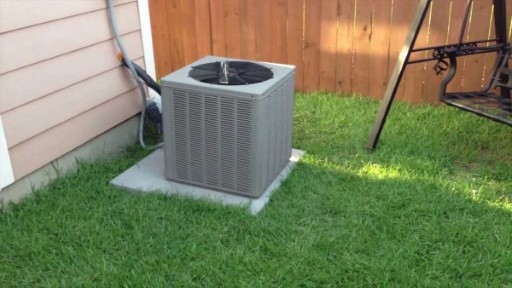3 Innovations That Will Change Your Home’s HVAC System Forever
August 23, 2023

Your smartphone isn’t the only tech device being upgraded every year. Companies like Samsung and Chromasun are developing advanced HVAC systems with sensors that will determine when to turn on the system, what temperature to maintain and which rooms to cool or heat. Here are three innovations you can expect to see on the market.
Movement-activated air conditioning
MIT engineers have developed a new air conditioning design that utilizes motion-detecting sensors attached to aluminum rods hung from the ceiling. The air conditioner turns on when movement is detected. This innovation is designed to help reduce energy costs and extend the lifetime of HVAC systems.
Samsung’s latest line of AC systems offers various performance capacity options, which include Party Mode (120%), Normal Mode (100%), Pleasant Mode (80%), Eco Mode (60%) and Home Alone Mode (40%). Samsung’s Digital Inverter boost can help consumers save up to 41% on energy by maintaining the desired temperature without the need to frequently turn the AC on and off.
Thermally driven air conditioning
Thermally driven air conditioning relies on solar energy and natural gas to cool the home, helping to provide more cooling capabilities than other currently available systems and eliminating electricity costs entirely.
Australian-based manufacturer Chromasun has developed a thermally-driven AC system built with a Micro-Concentrator (MCT) to harvest solar energy. The system concentrates sunlight onto a pipe filled with oil or water and utilizes a Fresnel lens to concentrate and magnify the light. This magnification helps to generate the heat necessary to drive the cooling process. On cloudy days, the system is powered by natural gas.
Sensor-enhanced ventilation
Smart HVAC vents offer many of the same benefits as smart thermostats, but also offer more nuanced control over how the home is heated or cooled. A typical AC unit sends cool air through the ducts and vents to cool the entire home simultaneously. This design, however, can lead to unnecessarily cooling less-used or unused areas of the home.
Sensor-enhanced vents are equipped with motion-sensing or proximity-sensing technology as well as motors that enable it to open or close on its own. If the room is already cooled or heated to the set temperature, or if the sensors don’t detect anyone present in the room, the vents will close automatically. The vents will open if the temperature changes or if someone enters the room. Sensor-enhanced ventilation helps to increase efficiency and reduce energy costs.
